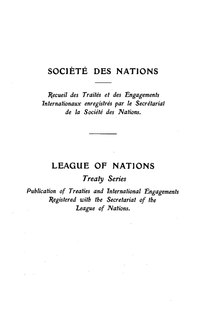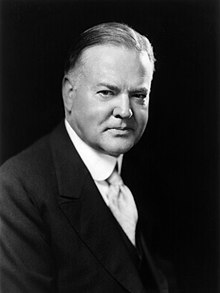Conference for the Reduction and Limitation of Armaments
| Geneva Conference | |
|---|---|
 Arthur Henderson speaking at the conference on 2 February 1932 | |
| Begins | 1 February 1932 |
| Ends | November 1934 |
| Location(s) | Geneva |
| Coordinates | 46.2044° N, 6.1432° E |
| Country | Switzerland |
| Participants | 31 nations |
| Organised by | League of Nations |
The Conference for the Reduction and Limitation of Armaments, generally known as the Geneva Conference or World Disarmament Conference, was an international conference of states held in
The conference was a response to the militarisation of global powers during and after the
The conference symbolised global co-operation to a combined goal of limiting arms, but it is generally perceived as a failure because of the onset of the
The conference's main objectives included defining aggressively-offensive weapons, reasonably-defensive weapons, abolishing submarines, aviation and heavy-duty tanks and limiting land forces.
Background
Legacy of First World War
During the
The developments included aircraft for infantry support, photographing infantry positioning and bombing; naval warfare, with submarines and German U-boats, and land armaments, including gases, machine guns and grenades.[4]
The aim of the Geneva Conference was disarmament that would target land, air and naval programs.[5]
After the war, the extensive death toll and the social effects of total war resulted in a general antiwar sentiment and encouraged the general sentiment of disarmament. The British Women's Society received 8 million signatures for disarmament and was accredited with a driving force behind the convening of the conference.[6]

The Treaty of Versailles laid out the terms for the Germans' conditional surrender, including their national disarmament.
- Article 160 stated that the German Army was to have no more than 7 infantry divisions, 3 cavalry divisions, 100,000 men and 4000 officers.
- Article 165 limited German guns, machine guns, ammunition, and rifles.
- Article 168 limited the manufacture of munitions, which was to be overseen by the League of Nations.
- Article 170 limited importations of arms.[7]
Diplomatic preliminaries
The first effort at international arms limitation was made at the
A preparatory commission was initiated by the League in 1925. By 1931, there was sufficient support to hold a conference, which duly began under the chairmanship of former
Nations involved
The Geneva Conference involved all of the nations signatory to the Covenant of the League of Nations, which included the United Kingdom, France, Italy and Japan as permanent members of the League of Nations Council.[5] It included all the Allies that had signed the Treaty of Versailles with Germany[9] and all neutral countries such as Switzerland that had vested interests in disarmament in Europe specifically.[9]
According to Gumbrecht, the League of Nations had been created with "the ideal of establishing a family of nations united by shared goals of peace".[10]” The Covenant of the League of Nations had been published on 28 April 1919 by unanimous agreement.

Article 8 of the Covenant stated that "the members of the League recognise that the maintenance of peace requires the reduction of national armaments to the lowest point consistent with national safety and the enforcement by common action of international obligations".[9]
The Geneva Conference was convened by the League of Nations in 1932 to fulfil the terms of Article 8 and to progress towards world peace by the process of disarmament.
Negotiations
The conference convened on the 1 February 1932 in Geneva, Switzerland, with the intention of implementing strategies to fulfill Article 8 of the Covenant of the League of Nations.[9]
The US ambassador to Belgium and minister to Switzerland and conference delegate, Hugh S. Gibson, had observed not long after the London Conference, the US had lost interest in the new conference because treaties already limited its navy, its army was so small that further reduction was ludicrous and the proposed measures of air limitation were so vague that they meant little. He wrote that the conference would "probably meet in February or March 1932 and, discouraging as it may sound, it will probably go on and on". He had come to believe that armaments would never be abolished completely but that treaties might maintain military balances.
The negotiations can be split into five distinctive categories or periods. As classified by the military historian Arther Steiner, "first period - emphasis on security, second period - appointment of commissions, third period - the general commissions, fourth period - the technical commission and the fifth period - the Hoover Proposals".[11]
Emphasis on security
This specifically focused on the time's geopolitical relations, which included Russia, Turkey, Iran, France and Germany. The main focus was France and developing relations that reassured that it could safely disarm, which involved a development of American-French and Anglo-French relationships.[11]
Appointment of commissions
This began of 25 February 1933 and involved finding a representative from each state. Together, they formed the General Commission, which delegated into the Naval and Air Commissions. This stage was concluded by 18 March 1933.[11]
General Commission
The third period, the General Commission, had the bulk of the negotiations take place. The conference began to attempt to enact the goals of the League of Nations,[11] which primarily involved classifying classes of weaponry and fortifications.
Classifying weaponry
The Covenant of the League of Nations defined national armaments as referring to generalised military forces including personnel, equipment, technology etc.[9] The conference intended to differentiate between offensive and defensive weapons. The negotiations centred largely on offensive weapons to stop future attacks, rather than reduce nations' defensive weapons.[12] However, nations often disagreed about the technicalities of certain weaponry.
Sir
Fortifications
A key negotiation of the conference involved the discussions surrounding armed
Additional discussions
In addition, other discussions were brought up during the General Commission such as whether the agreements were still in place during wartime, whether other regulatory bodies should be established to monitor and to enforce it and whether there should be demilitarised zones. Those issues were agreed upon with the ideal that the agreements set about should apply to both wartime and peacetime, a nonpolitical body should monitor disarmament and there should be no specific demilitarised zones.[11]
Technical Commission
This period was known for its high levels of debate, disagreement and technical issues.[3] Essentially no agreement or progress occurred during this session.[11]
Hoover's proposals

The US then sent a delegate to Geneva and became heavily involved in the Conference.[11]
US President Herbert Hoover acknowledged the failure and the lack of progress for the conference and proposed for the US to take the lead on disarmament.[14] As argued by Marlies ter Borg, the proposal that Hoover presented to the conference on the 22 June 1932 was a "potential turning point"[12] by suggesting that the US would abolish all aircraft, submarines, military aviation, tanks, poison gas and one third of the battleships.[14]
The involvement of the United States "injected life into a nearly dead conference".
Problems
The General Commission made progress with having nations agree on a number of terms.[11] However, it was unsuccessful in having individual nations implement its terms.[2]
There was a failure to obtain a German-French agreement on German arms, as the French did not want to disarm without a guaranteed alliance if war broke out with Germany again.[2] Czechoslovakia and Poland were vulnerable because of their geographical proximity to Germany, and the French feared that they would be attacked again with no way to defend themselves if they disarmed.[15]
In 1932 and 1933, the USSR, led by
Additionally,
Departure of Germany

Adolf Hitler came to power in January 1933 and quickly gained complete authority over the German government. He withdrew Germany from the League of Nations and then the Geneva Conference in October 1933. He temporarily rejoined the Geneva Conference under the Five-Power Agreement but quickly withdrew Germany again as progressions with the conference began to halt.[11]
The military superiority of Germany was a defining element of Hitler's ideology and foreign policy, which made the idea of disarmament unacceptable.[17] As soon as Hitler rose to power, he began the process of rearming Germany, clearly defying both the Treaty of Versailles and the objective of the Disarmament Conference.[17] Hitler drew on the unwillingness of other countries to disarm as a justification that Germany should not be forced to do the same.[18]
Aftermath
Ultimately, when Hitler withdrew Germany from the League of Nations and the Treaty of Versailles the French were unwilling to disarm.[15] The conference was ultimately adjourned in November 1934. The British Foreign Office stated that “the failure of the Disarmament Conference would have incalculable consequences for Europe and the League [of Nations]”.[19]
US Secretary of State
The exact reasons are not clear or agreed by historians for exactly why the conference failed. However, most academic sources and historians blame a combination of the rise of Hitler, the consequent withdrawal of Germany from the conference, the general unwillingness of nations to disarm, the highly-unstable political and economic climate and the looming threat of another world war.
References
- ^ Philip John Noel-Baker, First World Disarmament Conference and Why It Failed (1979)
- ^ ISBN 978-0-19-873526-7.
- ^ S2CID 220982933.
- ^ "World War I | Facts, Causes, & History". Encyclopedia Britannica. Retrieved 27 May 2020.
- ^ ISBN 978-0-231-89509-5.
- S2CID 154909587.
- ^ "The Treaty of Versailles". Library of Congress. 28 June 1919.
- ^ United States Department of State, Peace and War: United States Foreign Policy 1931-1941 (United States Government Printing Office, Washington, 1943) pp. 10
- ^ a b c d e "League of Nations - The Covenant". Encyclopedia Britannica. Retrieved 21 May 2020.
- OCLC 1066536066.
- ^ S2CID 145367431.
- ^ S2CID 220982933.
- ^ "Sir Basil Liddell Hart | British military historian". Encyclopedia Britannica. Retrieved 21 May 2020.
- ^ a b "Foreign Relations of the United States Diplomatic Papers, 1932, General, Volume I - Office of the Historian". history.state.gov. Retrieved 21 May 2020.
- ^ JSTOR 2620241.
- ^ JSTOR j.ctt1bhknv0.
- ^ ISBN 978-0-8131-6738-1.
- ISBN 978-1-5017-0756-8.
- ISBN 978-1-4008-7199-5.
- ISBN 0813130557.
Sources
- Davies, Thomas. "France and the World Disarmament Conference of 1932–34." Diplomacy and Statecraft 15.4 (2004): 765-780. online
- Fanning, Richard Ward, Peace and Disarmament, Naval Rivalry and Arms Control, 1922-1933, The University Press of Kentucky, Lexington, 1995.
- Kitching, Carolyn, Britain and the Geneva Disarmament Conference, Palgrave MacMillan, Houndmills, New York, 2003
- Noel-Baker, Philip John. "First World Disarmament Conference and Why It Failed" (1979)
- Schuman, Frederick L. Europe On The Eve 1933-1939 (1939) pp 28–54. online
- Steiner, Zara. The Triumph of the Dark: European International History 1933-1939 (2011) pp 9–61.
- Temperley, A.C. The Whispering Gallery Of Europe (1938), highly influential account online
